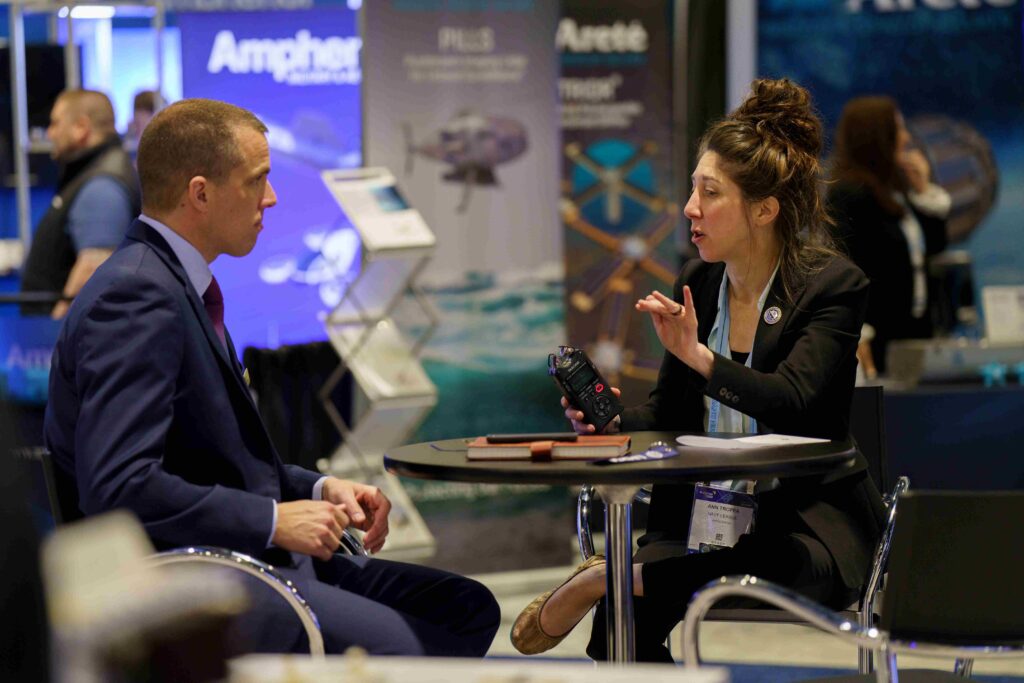
NATIONAL HARBOR, Md. — The littoral combat ship (LCS) commissioned April 1 is the first equipped with the new lightweight gas turbine engine enclosure designed by GE Marine to provide greater safety and more comfortable engineering spaces for Sailors, a GE Marine official said.
Steve Rogers, director of Marketing and Business Development for GE Marine Engines, told Seapower in an April 3 interview at the Navy League’s Sea-Air-Space Expo in National Harbor, said that the Independence-class littoral combat ship USS Santa Barbara (LCS 32) is the first LCS to be fitted with the new lightweight composite-material enclosure for its engines.
“Traditionally what the Navy has used is a is a steel base on which it sits and then an enclosure with steel walls. So … loud, noisy, hot,” Rogers said. “Now it’s a single forward composite piece for the walls and the roof. So, you don’t have rust maintenance and things like that. But more importantly, [there’s] 60% less airborne noise in the engine room.”
Rogers said the temperature of the enclosure walls, “is anywhere from 25 to 50 degrees cooler. So, a lot less heat is being ejected into the engine room and the Sailors have more access, better access to the engine.”
He said the composite enclosure is 2.5 tons lighter than the steel enclosure with the same footprint, providing ship designers with the flexibility to devote more weight capacity to fuel, payloads, or other uses. The new enclosure meets the Navy’s standards for fire protection and toxicity.
The U.S. Navy will be installing the composite enclosures on its Flight III Arleigh Burke-class guided-missile destroyers and Constellation-class guided-missile frigates. The enclosure also is being installed on the Finnish Navy’s Pohjanmaa-class corvettes.
Rogers said his company has seen no supply chain issues with producing the composite enclosure, pointing out that composite material is made five miles from the plant where the enclosure is made.
GE Marine Engines is working to improve the efficiency of its gas turbine engines while maintaining the same power output and reliability, Rogers said, also noting that the company is working to meet power requirements for warships to deploy such systems as laser weapons.
He said GE Marine Engines is expanding its global network — maintenance, repair, and overhaul (MRO) facilities and service technicians — to meet the requirements of its far-flung customers. The company maintains MROs in Canada, Germany, India, Italy, Japan, and South Korea.
- USS Canberra Commissioning Touched Hearts - September 15, 2023
- FUTURE USS CANBERRA (LCS 30) RECEIVES NATIONAL, GRASS-ROOTS SUPPORT FROM COMMISSIONING COMMITTEE - July 20, 2023
- Vietnam War Commemoration to Host ‘Epic Event’ - April 25, 2023



